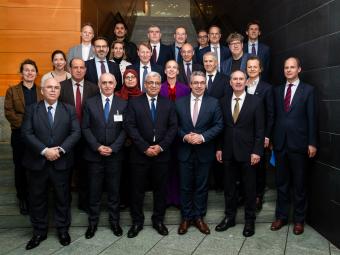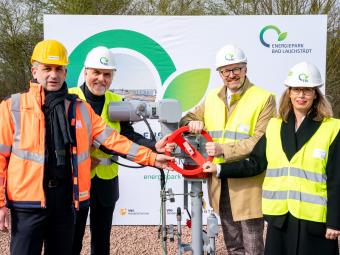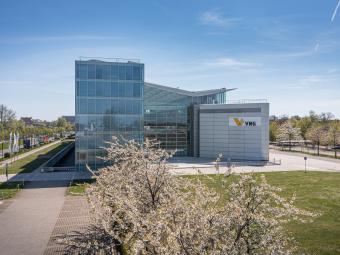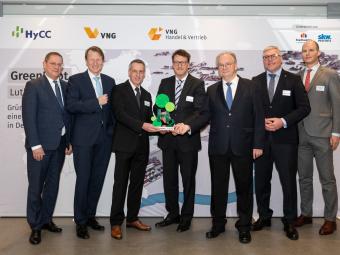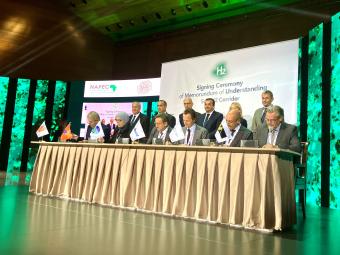“National hydrogen strategy is a real powerhouse for the energy transition”
VNG praises national hydrogen strategy and calls for rapid implementation
“With the national hydrogen strategy and the announcement that more than nine billion euros will be made available for it, the Federal Government has created a real powerhouse for the energy transition and Germany as an industrial location. I am pleased about the clear stance of the Federal Government that gaseous and liquid energy sources will remain an essential part of the energy system in Germany as an industrialised country in the long term,” said Heitmüller, who has been at the helm of the Group since 2016.
He was cautious in his assessment of the handling of the currently available technologies within the strategy. This means that, in view of the development of energy demand in this country, CO2-neutral hydrogen from natural gas using CCS technology (blue hydrogen) or methane pyrolysis (turquoise hydrogen) should play a transitional role and be used in addition to green hydrogen. Heitmüller would have liked to see long-term support for these three technologies. “It is regrettable that only green hydrogen is being supported in the long term, as this leaves great potential untapped. We are firmly convinced that hydrogen, in all its facets, must become an integral part of the energy mix as a climate-neutral and efficient energy source. The much-discussed question of which technologies are used is ultimately also a question of affordability, as the costs of using green hydrogen are still very high, whereas blue and turquoise hydrogen are cheaper to produce but still not economical,” says Heitmüller.
In the hydrogen sector, VNG is involved in the large-scale power-to-gas project ‘Energiepark Bad Lauchstädt’ in the ‘Chemical and Energy Triangle’ in the south of Saxony-Anhalt with the participation of its subsidiaries ONTRAS Gastransport GmbH (ONTRAS) and VNG Gasspeicher GmbH (VGS). The production, transport, economic use and, in the future, storage of green hydrogen on an industrial scale will be investigated there. “This is an outstanding pilot project from which the entire region can benefit. It illustrates the immense potential of hydrogen and is intended to show that the implementation of the hydrogen strategy has a high chance of success due to the existing very well-developed gas infrastructure both in central Germany and the rest of the country,” says Heitmüller.
He emphasised that hydrogen is a decisive factor in achieving the climate targets in the heating market, in transport and in industry. “This offers significantly better opportunities for the success of the energy transition, because the energy source can be utilised where the use of renewable electricity is not technically possible or simply not affordable. In this respect, the strategy contains a balanced catalogue of measures that can also contribute to being able to profitably offer hydrogen as a product on the market.” Heitmüller’s only reservation is that the potentials in the heating sector were still insufficiently considered in the paper.
In view of the international competition, the VNG CEO called for a fast pace in the implementation: “Hydrogen technologies could become a real export hit for Germany and make a sustainable contribution to the revival of the German economy. But if a German hydrogen economy is to be built up, then we have to start quickly. Otherwise, we will be running behind the developments in other countries.”
With its corporate strategy ‘VNG 2030+’, VNG has already laid the foundation for expanding the area of renewable and decarbonised gases and becoming more involved in the development of future-proof hydrogen solutions. “The national hydrogen strategy gives us the tailwind to push ahead with our sustainable hydrogen projects in the regions in eastern Germany that are undergoing structural change,” Heitmüller emphasised.
